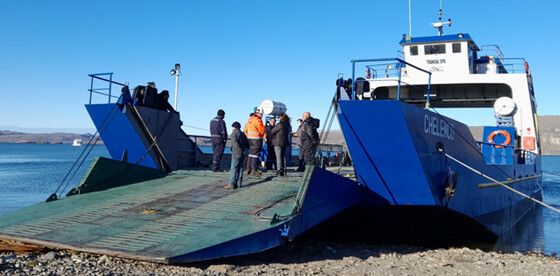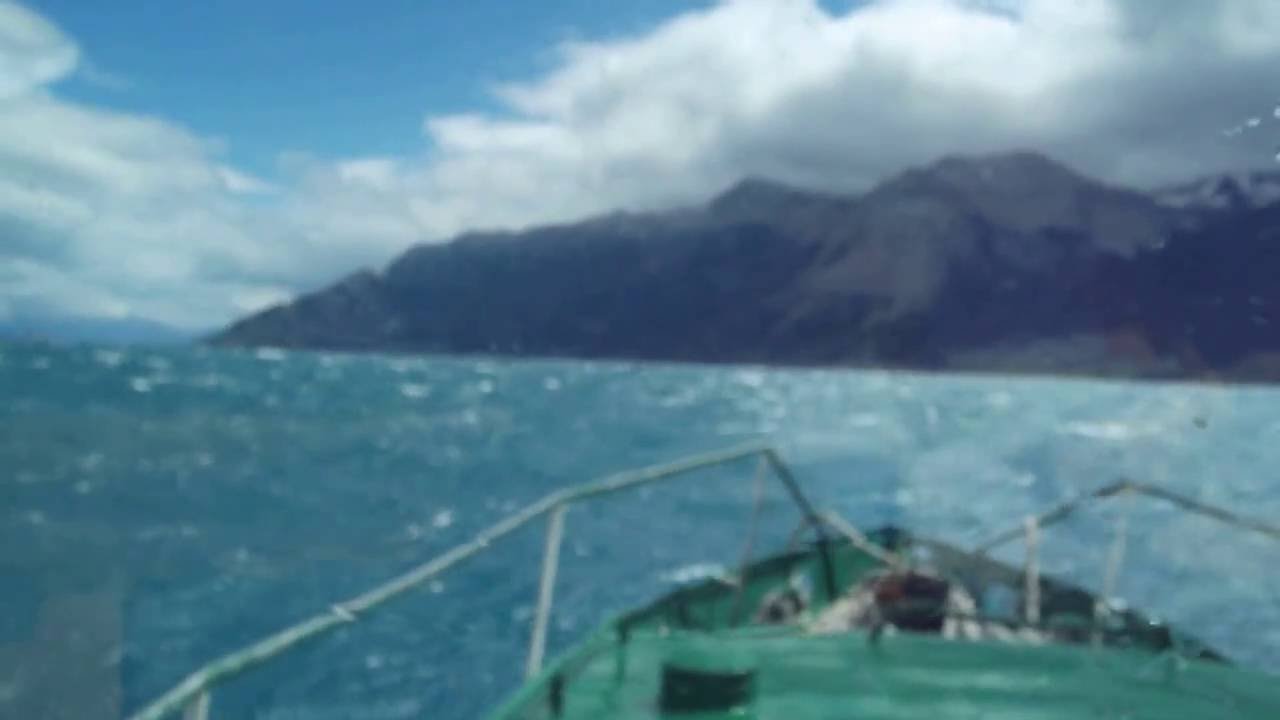More than 25 years ago I was in Aysén, crossing Lago General Carrera on a small ferry-barge, a barcaza. That lake is the most prominent feature of the region, and the second largest body of water in South America. That ferry was probably the old Chelenko, which is dwarfed by the larger Pilchero and Tehuelche ferries today.
Although I’ve been across the lake many times, on several types of ferries, that particular day was memorable. It was a thick weather day, with enormous wind-waves that rolled the ferry and reduced the effective freeboard to just inches as the winds ripped the tops of those waves and sent sheets of water flying across the deck, to return to the lake on the lee side. At the time I had no vehicle cage to climb into and there were few dry or protected places anywhere for passengers on foot. A day to remember for that reason. And to remember again when Douglas Tompkins’ kayak was swamped and capsized in similar conditions.
Then in 2015, Tompkins was participating in an illegal kayak trip that eventually led to his death.
Tompkins was accustomed to flouting the law in Chile. His American friends in the region did likewise. After all, they had money and the power that comes with mountains of American dollars. They built multi-million dollar lodges, had their own helicopters, bought influential local attorneys, and purchased exemption from the laws that governed mere mortals in the area. One that I knew personally had smuggled a number of guns along with his “household goods.”
On the day of Tompkins’ last illegal outing, the Chilean Armada had delayed operation of the ferry ports on the lake, due to the forecast of extreme weather conditions. Longer kayak excursions of that sort, by law, have to be coordinated with the naval authorities.
Because of the extraordinary hazards on that lake, prior notification and approval are required for such kayak trips, along with a checklist of other obligatory items, including local contact numbers, the use of GPS and periodic position and condition reporting to the Armada, and the local presence of a support vessel. The Armada requires that a supporting individual “on land” be designated beforehand to supply specifics of an emergency, including locations.
The Americans, characteristically, ignored those obligations.
The Chilean Navy was never notified. At least before the accident. That meant that eventual rescue operations would be ill prepared, unaware of the accident location, and long delayed.
During the tribunal that investigated the events, it was learned that the kayak group did have a satellite phone, but they had not deigned to collect the numbers for local emergency contact. Nor would they respect the Armada’s required protocols. So the kayakers were never able to notify the local Armada authorities. Instead, the excursionistas called Puerto Varas, and one of Tompkins’ several luxury residences in the country. Precious time was lost relaying confusing reports to the authorities.
Those delays would augur against Tompkins’ survival.
Although the other kayakers in the group wore immersion suits of the type essential for the frigid waters of Lago General Carrera, Tompkins, in his usual signature arrogance, opted for a windbreaker jacket instead. That poor decision, coupled with the long list of other shameless violations and shortcomings, ultimately cost Tompkins his life.
Source: Information supplied by the offices of Chilean Navy captain Rodrigo Díaz Sotomayor

